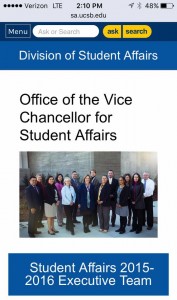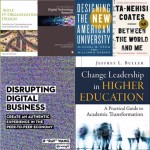 One of the difficulties for managers is how to simultaneously meet their responsibilities to 1) manage others, 2) attend seemingly endless meetings, and 3) take care of the work they must also do for themselves. In my role as Executive Director of IT, I became a bottleneck for the organization in that decisions and/or tasks that don’t take more than minutes to complete were left unattended for weeks. The problem is that I was doing too many things all at the same time (time slicing), and I was distracted by technologies that should help me be more productive. I was checking my emails and, at times, social media every few minutes. I’m sure some of my staff were getting frustrated for having to wait on me, and I was also getting frustrated at myself for not being more productive. The frustration led me to finally try different ways to improve my productivity. For years, I resisted using productivity techniques I’ve encountered, thinking I didn’t need them. However, through a change in mindset, technology, and techniques, I’ve noticed noticeable improvements in my productivity. Below is a list of these proven ideas you could consider.
One of the difficulties for managers is how to simultaneously meet their responsibilities to 1) manage others, 2) attend seemingly endless meetings, and 3) take care of the work they must also do for themselves. In my role as Executive Director of IT, I became a bottleneck for the organization in that decisions and/or tasks that don’t take more than minutes to complete were left unattended for weeks. The problem is that I was doing too many things all at the same time (time slicing), and I was distracted by technologies that should help me be more productive. I was checking my emails and, at times, social media every few minutes. I’m sure some of my staff were getting frustrated for having to wait on me, and I was also getting frustrated at myself for not being more productive. The frustration led me to finally try different ways to improve my productivity. For years, I resisted using productivity techniques I’ve encountered, thinking I didn’t need them. However, through a change in mindset, technology, and techniques, I’ve noticed noticeable improvements in my productivity. Below is a list of these proven ideas you could consider.
1) Mindset. Focus on one task at a time. I used to think I could “multitask,” but from multiple articles/books I’ve read, I was time-slicing, and the time to transition from doing one task to another is costly. Specifically, the cost of getting back to the original task once distracted is an average of 25 minutes.
2) Use time blocking. I mentioned above that managers must balance managing/delegating, attending meetings, and “creating,” which means taking care of their own tasks. In my case, “creating” means taking care of HR actions, budgeting, or thinking about strategies. Too often, the time for “creating” are short between meetings resulting in low quality and incomplete tasks. The solution to this problem is to block out times in your schedules so you can have continuous hours of time dedicated to “creating”. In my case, I’ve blocked my morning hours (8-12) for these times and the other parts of the day for other tasks. That’s impossible, you might say. I thought the same thing, but this technique has worked for me while it hasn’t been perfect. The key is to inform your staff and others you deal with of your intention so they don’t schedule these blocked-out times. There’s also a transition period to implement this. While these contiguous hours may not be available in the next few weeks for you since meetings have already been booked, you can schedule these time blocks starting two to three months from now.
3) Pomodoro technique. This time management technique aims to promote maximum focus and energy by concentrating on one task for 25 minutes. Using my iPhone, I set the timer for 25 minutes, and I aim to work on the one task I’ve defined to complete within that period. This means I don’t check my emails, browse social media, or tend to be distracted.
4) Manage your energy, not time. I’m a late-night and morning person. This means that my energy is highest at those times of the day. in the past, I had a habit of going through my emails and taking care of “little things” to start my day, but the problem is that I could have been using my peak energy during those times to tackle tasks requiring high energy and focus. Given that I’m a morning person, this is the reason why I’ve dedicated my “creating” time blocks from 8 am-noon. I then try to spend my afternoons meeting with my staff and other tasks.
The techniques mentioned above are fairly new to me, but I’ve found the results encouraging, which has led me to focus on other ways I can be more productive. It requires a different mindset and time management techniques that work for you.
Let me know other ways you’ve improved your productivity at work! If you’re to try the ideas I shared above, let me know if they worked for you.
Image credit: http://cdn-media-1.lifehack.org/wp-content/files/2014/11/Productive.jpg



